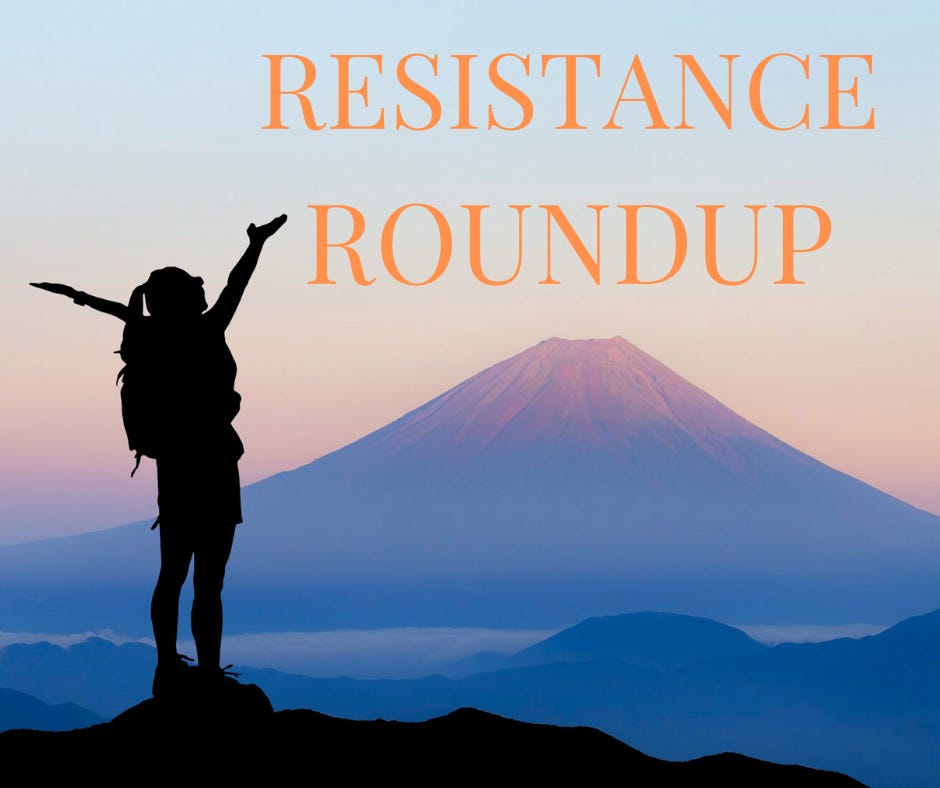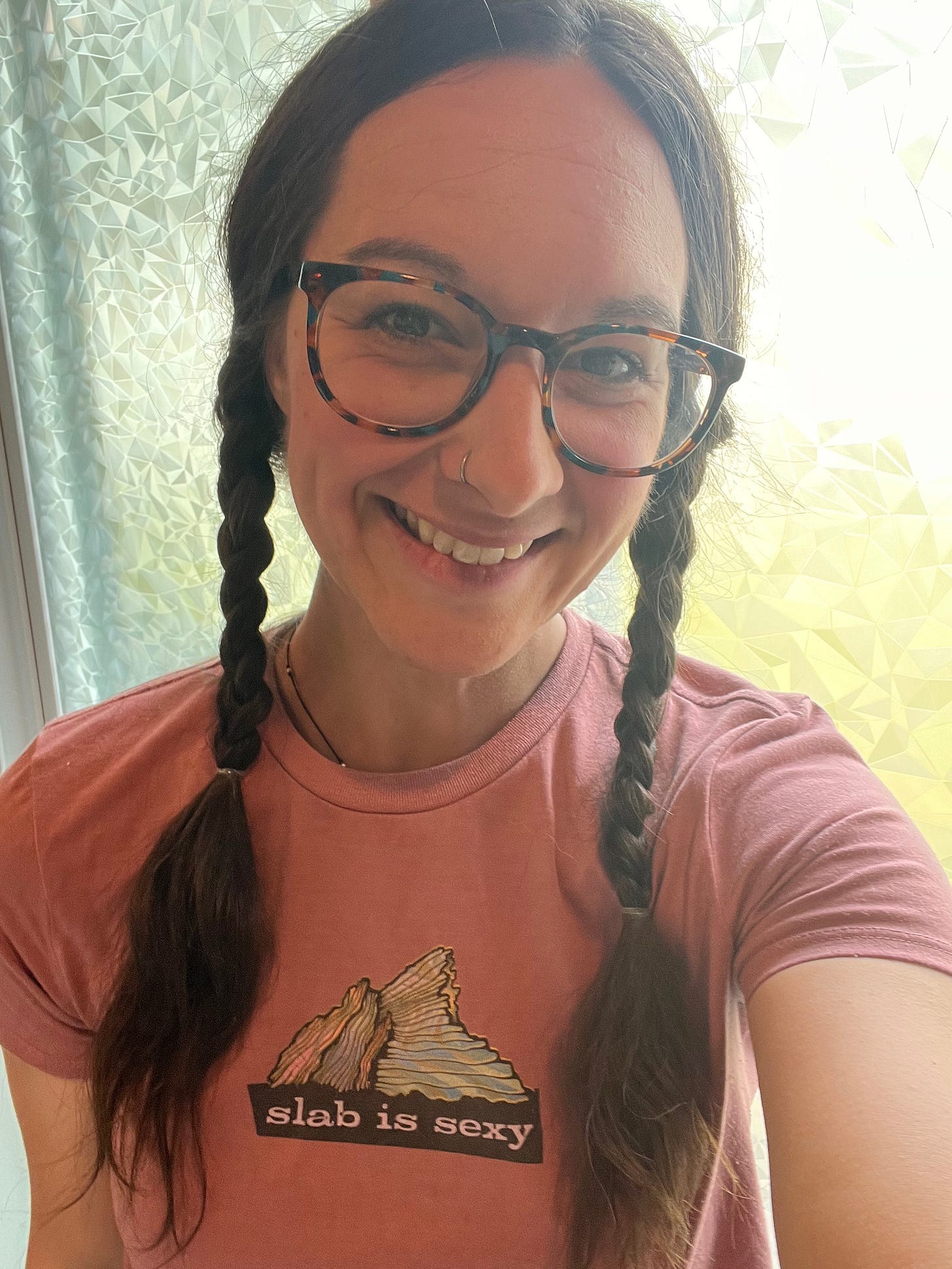Hello friends,
I can’t believe it’s Friday…again!
It has been the most wild spring for us in Philly, from traveling for my book to asbestos in our kids’ school to smoky skies and climate terror. Someone asked me recently where I find hope—I get that question a lot, actually.
I keep coming back to a few things: the power of story, Mother Earth, and children. Stories hold so much power, we cannot deny that, and if we engage in one another’s stories, we remember what belonging is for. Repairing our relationship to the lands and waters around us will always bring hope because Earth is our Mother, our caretaker, our friend. And the children? They are the future! They hold it and will hold it, and our job is to walk with them while we can and send them on with as much care as possible.
I think, in a way, resistance itself is hope. If we refuse to give up on our vision of a better world, of a more healed Us, then we are engaging hope at every level.
So, here are a few things that kept me tethered this week, kept me hoping and working toward the world I hope for.
First, this new song by Gregory Alan Isakov, one of my favorite artists, who has a new album coming out this month! I think his music is the perfect quiet kind of road trip music that makes me think of Summer. Hope you enjoy it.
I read an article recently in Dwell Magazine that was inspiring, and wanted to share it with you. It’s about the Wiyot tribe in California, getting some of their land back and creating housing and safe places there, especially for youth.
First, you should know about the World Renewal Ceremony Massacre. According to the tribe’s website:
The Wiyot people had gathered at the traditional site for the annual World Renewal Ceremony, which lasted seven to ten days. At night, the men would replenish supplies, leaving the elders, women and children sleeping and resting. Under cover of darkness, local men armed with hatchets and knives rowed to the Island and brutally murdered nearly all the sleeping Wiyot. Estimates of the dead ranged from 80 to 250 in that night's series of orchestrated massacres.
Since that time, the tribe has struggled to have land and care for their people against the US government. Finally, in 2019 the tribe was returned over 200 acres on Tuluwat. On this land they are turning operational buildings into housing:
The units will accommodate children ages 15 through 17, as well as young adults ages 18 to 25, many of whom need more life skills and are just getting out on their own. (By law, these age groups must be separated, so their units will not intermingle.) As Vassel notes, there are extended state foster care programs for those aging out of the system at 18 and assistance to get them an apartment, but the waiting lists are usually long. Others may not have a job or adequate income to rent an apartment. A student living in a car while taking classes at the nearby College of the Redwoods could need something safer, while another may not want to go to a different city for services. A Jaroujiji case manager will work with each youth to create an individualized plan that meets specific wellness and cultural goals and needs by assisting with things like housing or making a job-hunt plan, which could help them stay integrated with their community.
I hope you’ll take the time to read the entire piece, a reminder of what can happen if tribes are gifted their lands back and given more opportunities to care for their young people.
"I think society has forgotten how to take care of its people."
—Ted Hernandez, Wiyot tribe chair
The last thing I want to share with you was brought to my attention by Katherine May’s Substack The Clearing:
I love reading Katherine’s thoughts and hadn’t heard of Quiet Parks International, a non-profit helping people connect back to the quiet in themselves and in nature.
It’s an interesting thing as we still struggle with the pandemic—so many of us were forced into quiet spaces against our will for a few years, and some of us are longing to simply be with people again.
On the other hand, many of us find the world so over-stimulating that we long, ache, hope for the chance to get still and quiet, to hear ourselves again, to get to know Mother Earth on a level we haven’t before.
Visit their website to find quiet parks near you.
I’ll send you off with this excerpt from Living Resistance, from the Personal Realm, some thoughts on resilience and care:
As adrienne maree brown writes in Pleasure Activism,“We need to learn how to practice love such that care—for ourselves and others—is understood as political resistance and cultivat- ing resilience.”5 I love the connection that brown makes between resistance and resilience. Over the last few years, I have tried not to frame my own life or experiences as resilience, and I think I am starting to realize why: for society (or the oppressor or the colonizer) to tell the oppressed or colonized that we are resilient, even as they continue to knock us down, is entirely a different thing than for the oppressed or colonized to claim our own resistance on our own terms.
Does that resonate with anyone?
So how do we reframe our self-love and self-care as both political resistance and cultivated resilience? It becomes this when it belongs to us, when we set boundaries around what we need and do not need, when we name what is best for us, and when we reclaim our own sacredness. That is the kind of resilience I want to claim and hold on to, the kind my ancestors had, the kind that teaches me embodiment and keeps me dreaming of a better world when things feel so uncertain.







I love hearing stories of hope and that helps me hold onto mine even when it frays. I used to live in NorCal and went to College of the Redwoods and am inspired and hope-filled seeing the redemptive steps that are happening and what they’re doing with the land. I have friends in the indigenous communities there and this really hits home. Thank you for sharing this, I’m not as active on here as I’d like but I love reading your posts and resonate with so much!
“Self care as resistance”
I need to embody this